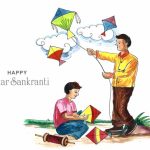Do you remember how you studied best when you were young? Perhaps you were the type of child who would burn the midnight oil, fastidiously reading and then re-reading Notes. Or maybe you preferred to watch a movie. Like, a documentary on the life of Mahatma Gandhi, the subject of the essay you had to turn in the next day.
What you did not know back then, was that there was something known as Different Learning Styles in students. That ‘different’ children used different methods of learning in the classroom, to absorb the ‘same’ information.
This article is an examination of those Learning Styles. Here you will find everything ranging from How to teach different Learning Styles, to Different Types of Learning Techniques. Moreover, you will also find Teaching Strategies for a Multicultural Classroom, that will help teachers bridge the Learning Gap between students from different backgrounds.
Are you ready to get started, and explore the Different Learning Styles for children? Let’s begin, with a close examination of something called ‘VARK’.
VARK: A look at the Different Learning Styles in Children
VARK is nothing short of being an acronym for the Different Learning Styles, developed by a gentleman named Neil Fleming. What the VARK system does, is to broadly categorize the different types of Learners out there, into four distinct types.
Visual Learners
Move over ‘words’, Visual Learners are here! They learn best with one of the Types of Learning Techniques, that is literally ‘Picture Perfect’!
Learning through Images is what characterizes Visual Learners. If you’re the kind of person who enjoys learning from things like Graphs, there’s a good chance you’re a Visual Learner. How they remember things is simply by ‘picturing’ it in their minds!
Aural Learners
You want to be careful when talking with an Aural Learner. They will remember something you said a long time ago, and hold you accountable for it!
An Aural Learner is one who is going to remember the lines to a Play, long after they have acted in it. Needless to say, an Aural Learner won’t need the help of Google Maps, to find the way to your home. All you have to do is get them to ‘hear’ those directions!
Reading Learners
These are the more ‘conventional’ learners out there. Those that learn best, when you give them a book to read from. Reading Learners are most comfortable with those ‘notes’ we touched upon earlier. They will in all probability curate those notes themselves, from matter they have read.
Kinesthetic Learners
The term ‘hands-on’ goes hand-in-hand, with Kinesthetic Learners. A Kinesthetic Learner is looking for a ‘real-life’ experience, to help them learn something in a way they know best. They happily soak in activities like Sports and Acting Classes!
How to Teach different Learning Styles: Teaching Strategies for a Multicultural Classroom
We have seen the different types of Learning Techniques. Now it’s time to take a look at how best to cater to those Different Learning Styles.
Teaching Strategies: Visual Learners
Here’s how to cater well to someone who learns best through ‘Pictures’.
- Employ effective, ‘visual’ Teaching Aids.
- Give them time to soak in the information well.
- Colour Coding.
You want to use resources like Videos, or even pages in Books laced with vibrant Illustrations. Tip: In the case of resources like Pie Charts and Graphs, you might want to hang them on the wall!
One way to get them to do this, is to get them to draw those pictures themselves!
Colour Coding, apart from having aesthetic appeal, is a great way to get children to absorb information. You could, say, use the colour Green to highlight the most important concepts in the subject matter you are teaching.
Teaching Strategies: Aural Learners
How do we best get Aural Learners to absorb information like a Sponge?
- The Art of Repetition.
- Using Podcasts.
- Q&A time.
The more they hear what they need to learn, the more likely it is to get firmly ensconced in their minds.
In this age, Podcasts make for an excellent option for teaching subjects to kids, the ‘Auditory’ way.
What’s the best way to clear up any queries children might have, about the subject matter at hand? Getting them to ask questions about any doubts they might have, and then having them ‘hear’ the answers.
Teaching Strategies: Reading Learners
Presenting ways to get the conventional learner, to retain the maximum amount of information.
- Get them more Textbooks.
- Using online resources.
Why limit them to one textbook, when you can get them to read from another? Reading Learners will jump at the opportunity to learn new information, no matter how many textbooks you present them with!
In today’s day and age, all that information you need is readily available at your fingertips. All you have to do is go online, and search for some articles that have some really cool information for those Reading Learners.
Teaching Strategies: Kinesthetic Learners
The following strategies make for a great ‘hands-on’ approach that will assist in the learning experience of those ‘Hands-On Learners’!
- Get them to explore different ways of studying.
- Present them with Real-World Examples.
- Field Trips and Lab Visits.
Kinesthetic Learners cannot be confined to a desk! Get them to explore different ways of studying, like holding a book and walking with it across the room as they read.
Giving Kinesthetic Learners resources like Case Studies, is a great way to get them to absorb information in a way that is best suited to them.
The Kinesthetic Learner wants to be as immersed in the ‘Real World’, as they possibly can be. This is where those field excursions and visits to the laboratory will fit in nicely with their learning style!
At EuroKids we are aware that different children have Different Learning Styles, and work in due accordance with the same to ensure all children learn in the manner most appropriate for them. The idea is getting children to imbibe information, in a way that will truly ‘resonate’ with them.
















